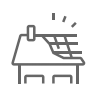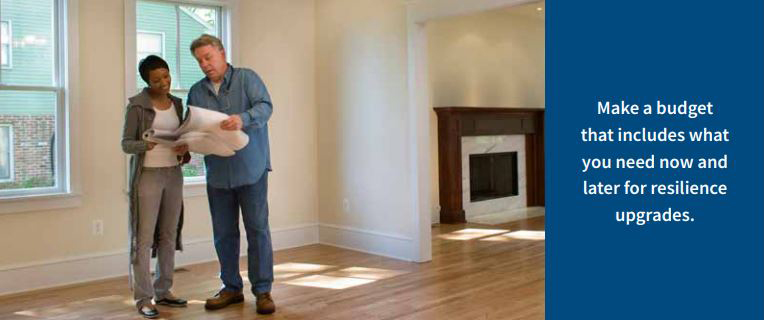Budgeting for a Resilient Home
Create the right budget for resilience when qualifying for a mortgage
- Understand the total cost of ownership with resilience in mind.
- Know what to include in budgeting for both cosmetic and resilient improvements.
- Consider different types of mortgages (green/energy-efficient, renovation, etc.) that could help incorporate resilience into your home after closing.
- Consult with a mortgage broker to explore options that support resilience.
Most homebuyer’s guides offer details about how to determine what you can afford when buying a new home. They cover homeownership costs and explain down payment requirements, income qualifications, and the monthly amount paid for Principal, Interest, Taxes, and Insurance, commonly known as PITI. The calculation may consider cosmetic improvements like kitchen cabinets or bathroom remodeling but frequently overlooks resilience or strengthening upgrades, which means it does not calculate the total cost of ownership in the context of resilience.
 | If a hurricane damages your home, will you be able to afford the percentage deductible required under most homeowners policies? For a home insured for $200,000 with a 5% hurricane deductible, you would be responsible for the first $10,000 payment for repairs before insurance is applied. |
 | If you are thinking ahead about resilience, you might consider installing hurricane shutters instead to help avoid those potential losses altogether. In that case, you might enjoy annual insurance savings if you live in Florida or other states with discount programs for resilient features. Such savings can even pay back the cost of hurricane shutters over time. |
 | If you live in an earthquake-prone region, you could ask your inspector to check the cripple walls in your basement. Bracing them is relatively inexpensive but can prevent collapsed walls when an earthquake strikes. If you live in California, you may even qualify for the California Earthquake Authority “Brace + Bolt” grant program. |
 | Installing flood vents may make your new home more resilient and save you money with flood insurance discounts, as well. |
Some private and government grant and loan programs will underwrite resilience features and retrofits. You may find that you are eligible for different types of mortgages (Green/Energy-Efficient, FHA 203k Rehab Loan, etc.) that incorporate energy efficiency or disaster resilience upgrades into your new home. Ask your mortgage broker to identify options, including borrowing extra cash to cover retrofits like installing hurricane shutters and an impact-resistant garage door.
No matter where you are looking to buy, you should create a budget that includes the amount needed immediately and for later projects or retrofits to create a resilient structure. Use the disaster-specific checklists to identify resilience upgrades and estimate their costs.





